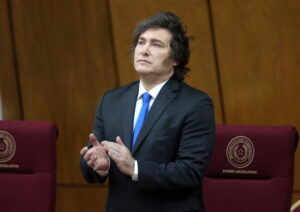“It started in the early hours of Tuesday and resembled one of those attacks by the ‘Free Russia Legion’ that fights alongside Ukrainians,” says Clarke, referring to previous incursions by groups—rather than Kyiv itself—against the Kremlin.
“It initially seemed like one of those attacks, which felt like a ‘sting,’ aimed at putting the Russians in a difficult position and creating a minor issue,” Clarke adds, but notes that over time, it became clear that Kyiv could bolster its presence in the area following significant early gains.
“It appears that the Ukrainians have decided to reinforce the front… and within approximately 48 hours, they have strengthened it with some fairly substantial units,” Clarke continues, noting that American and German tanks, as well as armored vehicles supplied by the Germans, are already on Russian soil. These actions have yielded results, with reports indicating that the Ukrainians have “captured at least twelve settlements. They have advanced towards Sundja, a key supply hub, and expanded northeast and southeast from there,” says the British analyst.
Sundja is the last operational transfer point for Russian natural gas to Europe via Ukraine.
“They are several kilometers deep into Russia, and this is a big deal—it is not just a raid,” concludes Professor Clarke.
Regarding Russia’s reaction, Clarke does not seem impressed. “The Russians thought they could handle it with a few of their reserve battalions,” he says, adding that “this is not happening.” To repel the Ukrainians, “they will need to commit more (resources)” to Kursk. However, such a development might create rifts in the Russian forces operating on Ukrainian territory.
Ask me anything
Explore related questions





